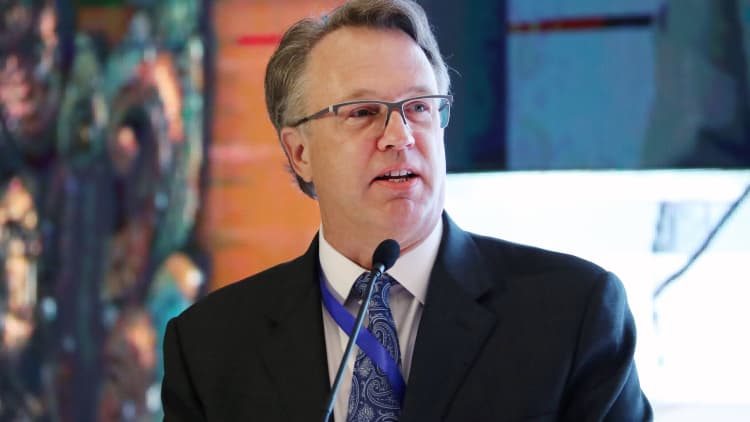
President Donald Trump weighed into a simmering debate over Federal Reserve interest rate policy, saying Friday that the central bank needs to end its "crazy" tightening moves.
In a series of tweets, the president addressed an unusual controversy stemming from a speech Thursday that New York Fed President John Williams delivered.
Market participants initially took Williams' remarks as indicative that the central bank was prepared to cut rates aggressively, by perhaps a half a percentage point. But a Fed spokesman soon walked back the comments, causing confusion over where policy is headed.
Trump said he liked Williams' "first statement much better than his second." He called on the Fed to "stop with the crazy quantitative tightening" and not to "blow it" by halting "unparalleled" growth.
The president, though, mischaracterized Williams' comments. Williams never said in the speech that the Fed raised "far too fast & too early," as Trump suggested. Rather, Williams said the Fed, when confronted with an economic downturn and interest rates close to zero, should cut quickly and aggressively.
Trump has long been a Fed critic, saying the central bank's rate hikes since December 2015, along with its efforts to reduce bond holdings on its balance sheet, i.e. "quantitative tightening," have constrained economic growth. The Fed already has announced plans to halt the balance sheet roll-off, likely in September.
With fears building over a bevy of issues including a global economic slowdown, tariffs, Brexit, debt ceiling negotiations and a vexing lack of inflationary pressures, markets widely expect the Fed to announce a rate cut at its July 30-31 meeting.
In his speech, Williams said that when faced with "economic distress," the Fed should "act quickly" and "keep interest rates lower for longer." Coming along with similarly dovish comments from Fed Vice Chairman Richard Clarida and St. Louis Fed President James Bullard, markets immediately started pricing in an even sharper reduction from the Fed than the typical quarter-point moves and looked for a possible half-point cut.
Williams' office, however, followed with a statement saying that his comments were only in regard to an academic study and shouldn't be construed as a current policy intention.
Traders on Friday were assigning a 41% chance of a half-point cut, according to the CME's FedWatch tracker.


